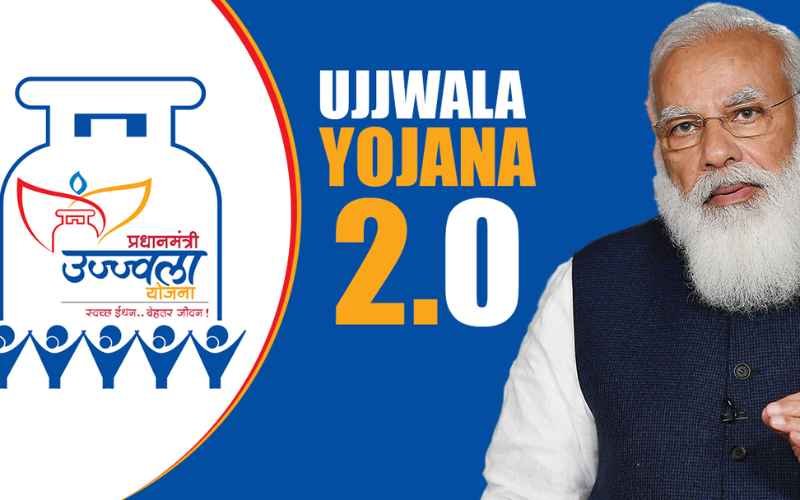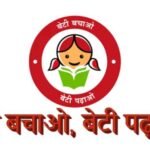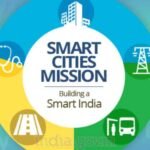In a significant step towards empowering rural households, the Government of India launched the Pradhan Mantri Ujjwala Yojana (PMUY) on May 1, 2016. Spearheaded by Prime Minister Narendra Modi, this flagship scheme aims to provide clean cooking fuel to millions of poor families in India. The initiative is a landmark in the country’s social welfare landscape, focusing on the health and well-being of women and children, while also addressing environmental concerns.

Objectives of the Pradhan Mantri Ujjwala Yojana
- Reducing Health Hazards:
- Problem: Traditional cooking methods using firewood, coal, and cow dung cakes generate harmful smoke, which exposes households to significant health risks.
- Solution: By promoting the use of LPG (Liquefied Petroleum Gas), the scheme aims to reduce the prevalence of respiratory diseases, eye problems, and other health issues associated with smoke inhalation.
- Impact: Healthier households with fewer incidences of respiratory and eye-related ailments.
- Empowering Women:
- Problem: Women, especially in Below Poverty Line (BPL) households, spend a significant amount of time and effort in gathering traditional fuels and cooking, which limits their opportunities for other productive activities.
- Solution: Providing free LPG connections to women from BPL households empowers them economically and socially.
- Impact: Access to clean fuel saves time and effort, allowing women to engage in education, employment, or entrepreneurial activities, thereby enhancing their quality of life and contributing to their empowerment.
- Environmental Conservation:
- Problem: The use of biomass fuels like firewood and cow dung cakes contributes to deforestation and air pollution.
- Solution: The transition from biomass to LPG helps in reducing deforestation and air pollution.
- Impact: A cleaner and greener environment, contributing to the overall goal of environmental conservation.
- Economic Development:
- Problem: Limited job opportunities in rural and economically disadvantaged areas.
- Solution: The increased demand for LPG creates jobs in various sectors including manufacturing, distribution, and retail.
- Impact: Economic growth through the creation of job opportunities, enhancing livelihoods and fostering economic development in communities.
Key Features of the Pradhan Mantri Ujjwala Yojana
- Target Beneficiaries:
- Focus Group: The scheme specifically targets women from Below Poverty Line (BPL) households.
- Identification Method: Beneficiaries are identified based on the Socio-Economic Caste Census (SECC) data, ensuring that the assistance reaches the most economically disadvantaged households.
- Financial Assistance:
- Amount: Each eligible beneficiary receives financial assistance of Rs. 1,600 for the LPG connection.
- Coverage: This amount covers the security deposit for a 14.2 kg cylinder, a pressure regulator, and installation charges, making the initial setup affordable for the beneficiaries.
- Interest-Free Loan:
- Purpose: The scheme provides interest-free loans to beneficiaries to cover the cost of the first LPG refill and the purchase of a stove.
- Benefit: This feature minimizes the initial financial burden on beneficiaries, making it easier for them to adopt LPG for cooking.
- Enhanced Safety:
- Training: The scheme includes mandatory training on the safe use of LPG to ensure that beneficiaries are well-informed about safety practices.
- Provision: Beneficiaries receive a safety hose and a user manual, further promoting the safe and effective use of LPG in households.
These key features collectively aim to make LPG accessible, affordable, and safe for economically disadvantaged households, thereby improving their quality of life and promoting broader socioeconomic benefits.
Achievements and Impact of the Pradhan Mantri Ujjwala Yojana
- Widespread Coverage:
- Milestone: Over 80 million LPG connections have been distributed across the country.
- Impact: This extensive distribution has significantly increased the penetration of clean cooking fuel, particularly in rural areas, where access to LPG was previously limited.
- Health Benefits:
- Reduction in Health Issues: The adoption of LPG has led to a noticeable decrease in health problems related to indoor air pollution.
- Improvement in Well-Being: Women and children, who are most vulnerable to smoke exposure from traditional fuels, have experienced significant improvements in health and overall well-being.
- Environmental Impact:
- Reduced Deforestation: The shift from traditional biomass fuels to LPG has contributed to a reduction in deforestation.
- Lower Emissions: The use of LPG results in lower emissions of harmful pollutants, promoting environmental sustainability and contributing to cleaner air quality.
- Women Empowerment:
- Enhanced Quality of Life: The provision of a cleaner and more efficient cooking alternative has greatly improved the quality of life for women.
- Social Status: Access to LPG has empowered women by reducing their time and effort spent on cooking-related tasks, enabling them to engage in other productive activities and enhancing their social status within their households and communities.
Challenges and the Way Forward for the Pradhan Mantri Ujjwala Yojana
- Sustained Usage:
- Challenge: Many beneficiaries revert to traditional fuels due to the cost of refills, which can be prohibitive for economically disadvantaged households.
- Solution: Government initiatives to subsidize refills can help mitigate this issue, making LPG more affordable and encouraging sustained usage.
- Way Forward: Implement targeted subsidy programs and explore options for micro-financing to assist beneficiaries with refill costs.
- Awareness and Education:
- Challenge: Continuous education about the benefits of LPG and safe usage practices is necessary to ensure beneficiaries make informed decisions and use LPG safely.
- Solution: Community outreach programs, workshops, and information campaigns can effectively disseminate this knowledge.
- Way Forward: Partner with local organizations, health workers, and community leaders to conduct regular educational sessions and create awareness about the advantages of using LPG over traditional fuels.
- Infrastructure:
- Challenge: Expanding the LPG distribution network to remote and underserved areas is crucial for ensuring timely and efficient supply.
- Solution: Invest in infrastructure development, such as establishing more distribution points and improving transportation logistics.
- Way Forward: Collaborate with private sector partners and leverage technology to optimize supply chain management and ensure that even the most remote areas have access to LPG.
By addressing these challenges, the Pradhan Mantri Ujjwala Yojana can achieve its full potential, ensuring long-term benefits for health, environment, and women’s empowerment.
Conclusion
The Pradhan Mantri Ujjwala Yojana is a transformative initiative that has brought about significant positive changes in the lives of millions of rural households in India. By providing access to clean cooking fuel, the scheme has not only improved health outcomes and empowered women but also contributed to environmental conservation. As the scheme evolves, addressing the challenges and enhancing the support mechanisms will be crucial in ensuring its long-term success and sustainability. The Ujjwala Yojana stands as a testament to the government’s commitment to inclusive and holistic development, paving the way for a healthier and more empowered India.
FAQS
1. What is the Pradhan Mantri Ujjwala Yojana (PMUY)?
Answer: PMUY is a government scheme aimed at providing free LPG connections to women from Below Poverty Line (BPL) households to ensure clean cooking fuel for poor families.
2. Who is eligible for the Ujjwala Yojana?
Answer: Women from BPL households identified through the Socio-Economic Caste Census (SECC) data are eligible for the scheme.
3. How can one apply for an LPG connection under the Ujjwala Yojana?
Answer: Eligible women can apply by filling out the Ujjwala Yojana application form available at LPG distributor offices, along with necessary documents like Aadhaar card, BPL card, and bank account details.
4. What documents are required to apply for PMUY?
Answer: The required documents include an Aadhaar card, a BPL certificate, a bank account number, and a recent passport-sized photograph.
5. What financial assistance is provided under the scheme?
Answer: Each eligible beneficiary receives Rs. 1,600 for the LPG connection, which covers the security deposit for the cylinder, pressure regulator, and installation charges.
6. Is there any provision for an interest-free loan under PMUY?
Answer: Yes, beneficiaries can avail of an interest-free loan to cover the cost of the first refill and the purchase of a stove.
7. How many LPG connections have been distributed under the scheme?
Answer: As of now, over 80 million LPG connections have been distributed under PMUY.
8. What are the health benefits of using LPG instead of traditional fuels?
Answer: Using LPG reduces exposure to harmful smoke, decreasing the incidence of respiratory diseases, eye problems, and other health issues related to indoor air pollution.
9. What environmental benefits does the Ujjwala Yojana offer?
Answer: The scheme helps in reducing deforestation and lowering emissions of harmful pollutants, contributing to a cleaner and greener environment.
10. How does PMUY empower women?
Answer: By providing access to clean and efficient cooking fuel, the scheme saves time and effort for women, enabling them to engage in other productive activities and improving their overall quality of life.
11. What safety measures are included in the scheme?
Answer: Beneficiaries receive training on the safe use of LPG, along with a safety hose and a user manual, to ensure safe handling and usage of the LPG connection.
12. Are there any challenges associated with PMUY?
Answer: Challenges include ensuring sustained usage of LPG, increasing awareness and education about its benefits, and expanding the distribution network to remote areas.
13. How does the government plan to ensure sustained usage of LPG?
Answer: The government plans to provide subsidies on refills and continue awareness programs to encourage beneficiaries to use LPG consistently.
14. What is the process for getting a refill under PMUY?
Answer: Beneficiaries can book refills through various channels like online portals, mobile apps, and customer care centers provided by the LPG distributors.
15. Is there any helpline for queries related to PMUY?
Answer: Yes, beneficiaries can contact the dedicated PMUY helpline at 1800-266-6696 for any queries or assistance.
16. Can beneficiaries choose their LPG distributor?
Answer: Yes, eligible beneficiaries can choose their preferred LPG distributor from the list of distributors available in their area.
17. What steps are taken to educate beneficiaries about LPG safety?
Answer: The scheme includes mandatory safety training sessions, distribution of safety manuals, and regular awareness campaigns to educate beneficiaries.
18. How is the scheme funded?
Answer: PMUY is funded by the central government through budgetary allocations and contributions from Oil Marketing Companies (OMCs).
19. What is the role of Oil Marketing Companies (OMCs) in PMUY?
Answer: OMCs play a crucial role in implementing the scheme by distributing LPG connections, providing safety training, and ensuring the supply of refills.
20. How does one check the status of their PMUY application?
Answer: Beneficiaries can check the status of their application through the PMUY official website or by contacting their LPG distributor.













